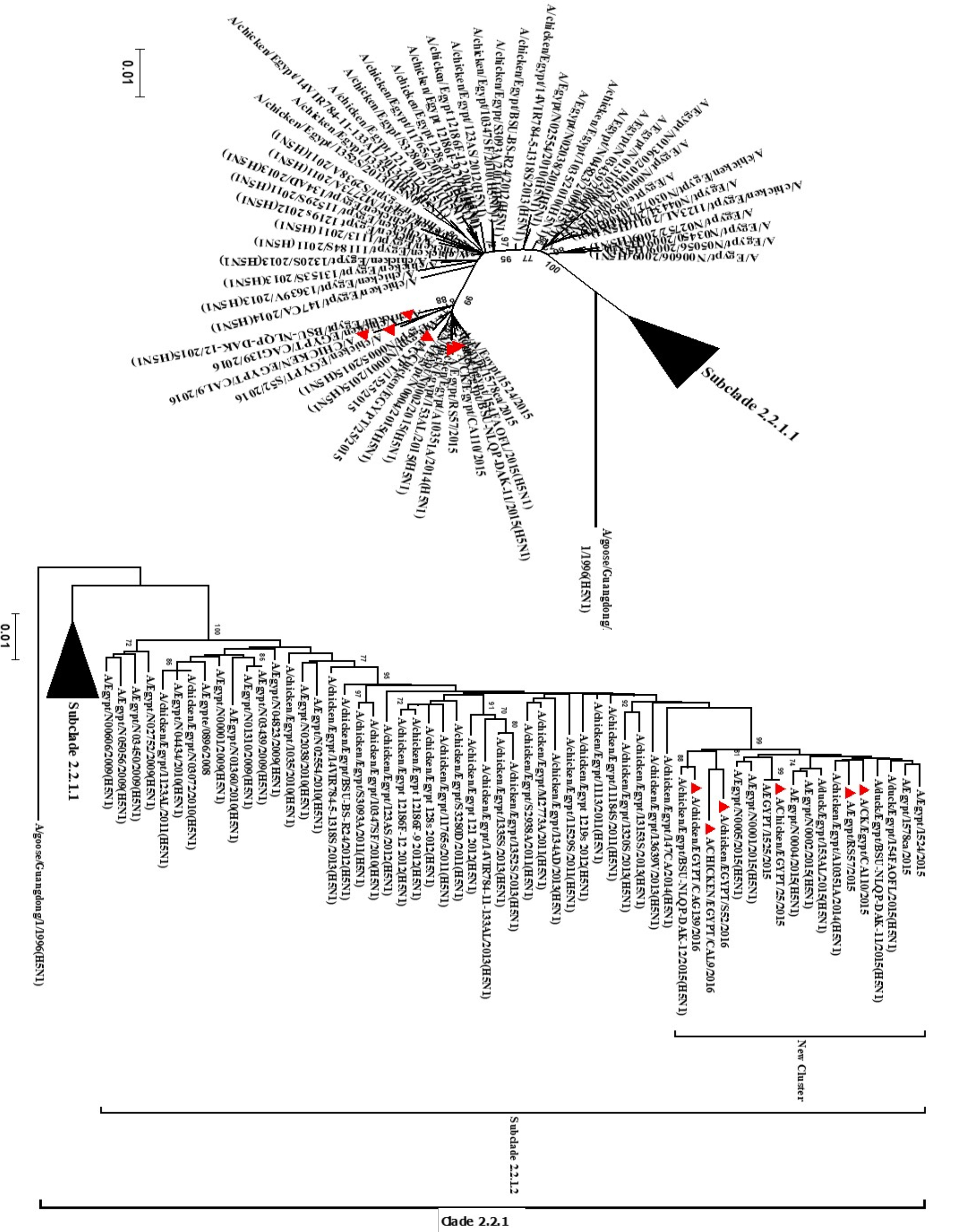Evolutionary Analysis and Phylodynamics of Avian Influenza Virus H5N1 between 2015 and 2016 in Egypt
Evolutionary Analysis and Phylodynamics of Avian Influenza Virus H5N1 between 2015 and 2016 in Egypt
Osama Elshazly1, AbdelSatar Arafa1, Mohammed A. Rohaim2, Ismaeil M. Reda2 and Hussein A. Hussein2*
Geographical distribution for positive cases of highly pathogenic avian influenza H5N1 outbreaks in commercial and backyard flocks within six Egyptian governorates between 2015 and 2016 in compare to the total screened samples.
Phylogenetic tree of haemagglutinin (HA) gene sequences of Egyptian H5N1 viruses showing the continuous evolution of Egyptian H5N1 subclade 2.2.1.2 with the establishment of distinct cluster with close relation to the reported human isolates. The robustness of individual nodes of the tree was assessed using 1000 replications of bootstrap re-sampling of the originally aligned nucleotide sequences. Scale bar represents the number of substitutions per site. The year of isolation and geographical origin of the virus sequences are included in the tree.
Distribution of negative and positive selection motifs along the HA protein for the Egyptian H5N1 viruses. Accumulated dN-dS are shown that are spanning amino acid residues from 1 to 547.








